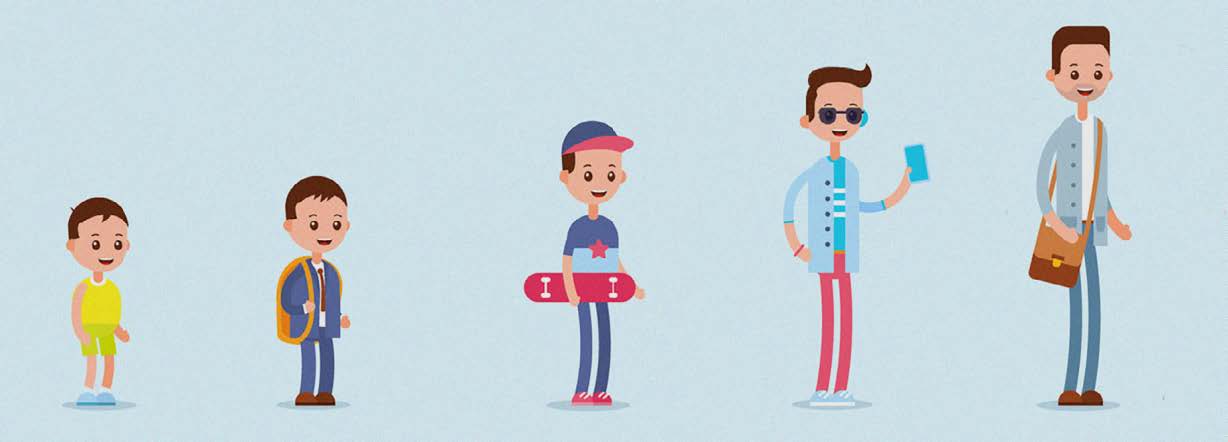TRANSITION PLANNING FOR THE DEAF STUDENT
J. FREEMAN KING, ED.D.
Transition planning is the process deaf students navigate as they move from a high school setting to further education, employment, and/or independent living. Quality transition planning is proactive and coordinated as it enables students and their parents to prepare for life after high school.
An effective transition program provides students with the tools and the confidence needed to assume responsibility for their educational, social, and employment decisions. Transition planning is essential for deaf students, who experience unique educational and life challenges as a result of their hearing loss, such as communication barriers, lack of effective accommodations, and intentional and unintentional discrimination.
There are several important transition questions that must be addressed by both the student and the parent:
- • What kinds of extracurricular experiences will provide the student opportunities to learn social and problem-solving skills?
- • What kind of classes will prepare the student for postsecondary programs and/or employment?
- • Should the student be employed while in high school?
- • Will the student participate in general education classes or need more intense training to achieve postsecondary goals?
- • What types of accommodations are needed in various employment opportunities?
Transition planning is a team process that engages the student, their teachers, their parents, and other service providers. It is complex and presents a different scenario for each student. An effective transition plan is initiated as early as middle school and is articulated in an individual transition plan that works in concert with the student's individualized education plan (IEP). The transition team plans a course of action that includes the following:
- • Conducting appropriate assessments that identify the deaf student's strengths, needs, likes, and dislikes in areas such as academics, career, employment, and extracurricular/social activities.
- • Identifying postsecondary goals that encompass employment, education/training, and/or independent living.
- • Creating a course plan of action for classes needed to meet postsecondary and annual goals.
- • Agreeing on annual high school goals that support the postsecondary goals, including opportunities to promote self-determination and self-advocacy skills. The design of the actual transition plan will pay particular attention to the following:
- • The plan should be student-focused.
- • The plan should ensure that the student is involved and his/her contributions are incorporated.
- • Parents should be actively involved in the transition plan as well as its process.
- • The plan will utilize appropriate transition assessments that are normed on the deaf student and should be utilized to gather valuable information.
- • The transition plan should include regular checks with the student about barriers encountered and accommodations used.
- • The transition plan will include annual reviews and revisions; it should be flexible.
It is imperative that the student be involved in the transition planning and process. When a student is involved in the identification and decision making of an activity, goal, or plan, he/she will have a greater stake in the outcome. For deaf students, whose ready access to incidental learning is limited, student involvement in transition planning is critical. Students need to learn what their strengths and needs are, understand how their hearing loss and/other disabilities might impact them in different settings, and explore what they want to do after they complete their high school education. Their opinions need to be taken into consideration to keep transition goals on target.
Though it is important that the student participates in the process and the implementation of transition skills, the role of the parents and other family members in transition planning should not be underestimated. The parents can contribute information that the school does not have about the student's life and support systems outside of school. When the parents and other members of the family understand the transition plan and its importance to the deaf student's success, they are more likely to be committed and contribute to the plan.
It is also important that the student and parents are aware that the federal government requires that schools address transition planning for deaf students starting at age 16. This requirement is part of the Individuals with Disabilities Education Act (IDEA), which also mandates that the student be invited to his/her annual transition planning meetings. There are other federal laws, often termed Accessibility Laws, of which the student and the parent need to be aware when addressing the transition plan: Section 504 of the Rehabilitation Act of 1973; the Individual with Disabilities Education Act of 1975; and the Americans with Disabilities Act of 1990.
Section 504 of the Rehabilitation Act of 1973: This was the first civil rights disability law to be enacted in the United States. It prohibits discrimination of qualified individuals with disabilities by entities that receive federal financial assistance.
Individuals with Disabilities Education Act of 1975 (IDEA): This law insures that every child with a disability has access to a free and appropriate public education. This federal law governs all aspects of special education services to eligible children from birth to high school graduation or age 21.
Americans with Disabilities Act of 1990 (ADA): This is a federal civil rights law that prohibits discrimination against individuals with disabilities in all areas of public life, including employment, education, transportation, and all public and private places that are open to the general public, regardless of whether or not they receive federal financial assistance.
It is imperative that the parent and the deaf student both feel they are empowered by the law to assure that the student's transition program/plan is appropriate and effective.

A PLAN, A MAN: An effective transition plan is initiated as early as middle school and is articulated in an individual transition plan that works in concert with the student's individualized education plan.
ABOUT THE AUTHOR:
J. Freeman King, Ed.D. ia Professor, Deaf Education, Utah State University, Logan, Utah.